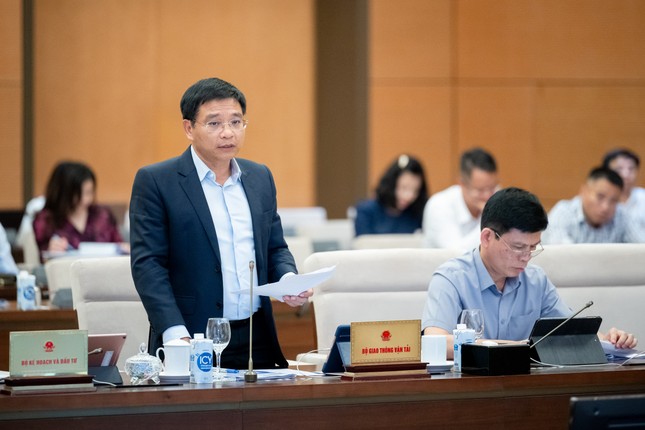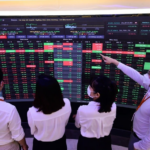Presenting the Government’s paper, Minister of Transport (MOT) Nguyen Van Thang said that the Gia Nghia – Chon Thanh expressway is part of the North – South Expressway in the West. This is an important traffic route, connecting the Central Highlands region with the Southeast, Southwest regions and Ho Chi Minh City.
According to the Minister of Transport, investing in the Gia Nghia – Chon Thanh expressway will solve the bottleneck in traffic infrastructure, create new development space, and act as an impetus for socio-economic development, ensuring national defense and security in the Southeast and Central Highlands regions.

Minister of Transport Nguyen Van Thang at the meeting.
The Gia Nghia – Chon Thanh expressway is planned with a scale of 6 lanes. The first investment phase with a length of about 130 km (passing through Dak Nong province for nearly 28 km, through Binh Phuoc province for more than 100 km), the scale of 4 completed lanes, and the clearance of land for 6 lanes at once.
The preliminary total investment for this project is over VND 25,500 billion, including VND 12,770 billion from the State budget and VND 12,770 billion from investors.
The Government proposes that the National Assembly approve the allocation of VND 8,770 billion from the increased revenue, saving regular spending of the Central budget in 2022 and VND 1,500 billion from the reserve fund of the medium-term public investment plan with the Central budget capital for the period 2021- 2025.
In the examination, Chairman of the Economic Committee Vu Hong Thanh said that the Economic Committee agreed on the necessity of investing in this project, but suggested a clearer analysis of the costs of collection, compensation, support, and resettlement, especially the costs related to the conversion of forest use purposes and rice land of the project.
Some opinions say that the proposal to allocate VND 1,500 billion from the reserve fund of the medium-term public investment plan with the Central budget capital for the period 2021 – 2025 is “not feasible”. Because, according to regulations, the above capital will only be implemented until January 31, 2026, while the project is expected to be completed by the end of 2026.
The Economic Committee also proposed supplementing the basis to ensure the feasibility of the project, avoiding the case of not being able to select an investor or not being able to mobilize credit capital, leading to a switch to the form of public investment, which prolongs the time and reduces the effectiveness of investment.
Speaking at the meeting, National Assembly Chairman Vuong Dinh Hue emphasized that this is a very important project, the Government and the National Assembly Standing Committee wanted to submit it earlier, but they needed to prepare carefully, ensuring the factors, so they have only now considered submitting it to the National Assembly. The preparation work has basically been ensured, he suggested supporting the addition of this project to the agenda of the 7th session .
Regarding concerns about the disbursement issue, Minister of Transport Nguyen Van Thang admitted that the project capital is very large, and ensuring the basic completion schedule by 2026 is also a problem. Experience has shown that immediately after the National Assembly approves the investment policy, localities must strongly deploy to ensure conditions, including site clearance and resettlement.
Regarding the feasibility of the public-private partnership (PPP) investment form, Mr. Nguyen Van Thang said that according to the financial plan analysis and experience of the Ministry of Transport, this project is relatively feasible because the State participates, with a capital recovery plan of only 18 years.
Concluding the meeting, Vice Chairman of the National Assembly Nguyen Duc Hai said that the Standing Committee of the National Assembly agreed to submit to the National Assembly for consideration and decision on the investment policy at the 7th Session.





































